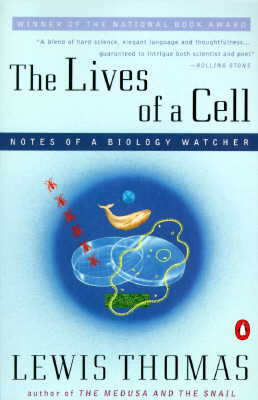What do you think?
Rate this book


160 pages, Paperback
First published January 1, 1974
The microorganisms that seem to have it in for us in the worst way – the ones that really appear to wish us ill – turn out on close examination to be rather more like bystanders, strays, strangers in from the cold. They will invade and replicate if given the chance, and some of them will get into our deepest tissues and set forth in the blood, but it is our response to their presence that makes the disease. Our arsenals for fighting off bacteria are so powerful, and involve so many different defense mechanisms, that we are in more danger from them than from the invaders. We live in the midst of explosive devices; we are mined. (p. 78)
A solitary ant, afield, cannot be considered to have much of anything on his mind; indeed, with only a few neurons strung together by fibers, he can’t be imagined to have a mind at all, much less a thought. He is more like a ganglion on legs. Four ants together, or ten, encircling a dead moth on a path, begin to look more like an idea. They fumble and shove, gradually moving the food toward the Hill, but as though by blind chance. It is only when you watch the dense mass of thousands of ants, crowded together around the Hill, blackening the ground, that you begin to see the whole beast, and now you observe it thinking, planning, calculating. (p. 12)
Viewed from a suitable height, the aggregating clusters of medical scientists in the bright sunlight of the boardwalk at Atlantic City, swarmed there from everywhere for the annual meetings, have the look of assemblages of social insects. There is the same vibrating, ionic movement, interrupted by the darting back and forth of jerky individuals to touch antennae and exchange small bits of information; periodically, the mass casts out, like a trout-line, a long single file unerringly toward Childs’s. If the boards were not fastened down, it would not be a surprise to see them put together a nest of sorts. (p. 100)

Viewed from a suitable height, the aggregating clusters of medical scientists in the bright sunlight of the boardwalk at Atlantic City, swarmed there from everywhere for the annual meetings, have the look of assemblages of social insects. (11)In addition to showing Thomas's ironic point of view, this quote is also a theme that connects his sometimes all-over-the-place musings. Thomas wants to look at the smallest level of life and the largest and see interdependence and connection. Considering various organisms, and even the entire planet, in this way is often intriguing.